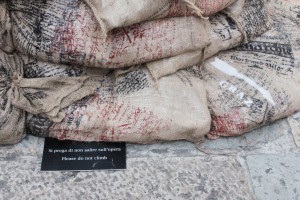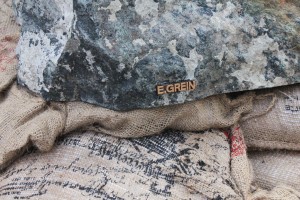Dear Kate,
I was thinking on how the semantic of the piece changes by the incorporation of signs. It is as if the piece acquires another meaning by adding those layers of information to it. Take for example the one that says: “ Do not climb”, requirement of the authorities in order to ensure the security of the work, in English is a very neutral sign, but in Italian “ Si prega di non salire sull’opera” gives the intervention in public space the status of work of art and by doing so a mystical and unexpected seriousness.
The explanation, in the form of a signal with logos incorporated gives the public a controversial solution of the question that the work poses by existing there itself. I find extremely necessary to think of the necessity of revealing the concept. It is truly mandatory to make the idea transparent to the public? It is really necessary to let them know? Or it is possible to let them decide by themselves? Very hard call!!
The semantic layer imposed by a signal that I like the most, is the one of the sponsors. By attaching to the stone the name “E. Grein” it appears on the surface of the entire work a very essential question: the authorship of a piece of art in public space. To my concern the work or the art piece just exists in the experience of the observer towards it. The object is then just a detonator of narrative, which is to say, to name that who created the piece in the public realm, is sometimes unnecessary. I wonder in any case what happens with this particular name? That even if it does not correspond to the authors of the piece, opens the door to a possible authorship reading, as if the work was made by someone named Evangelina or Ernestina Grein…


